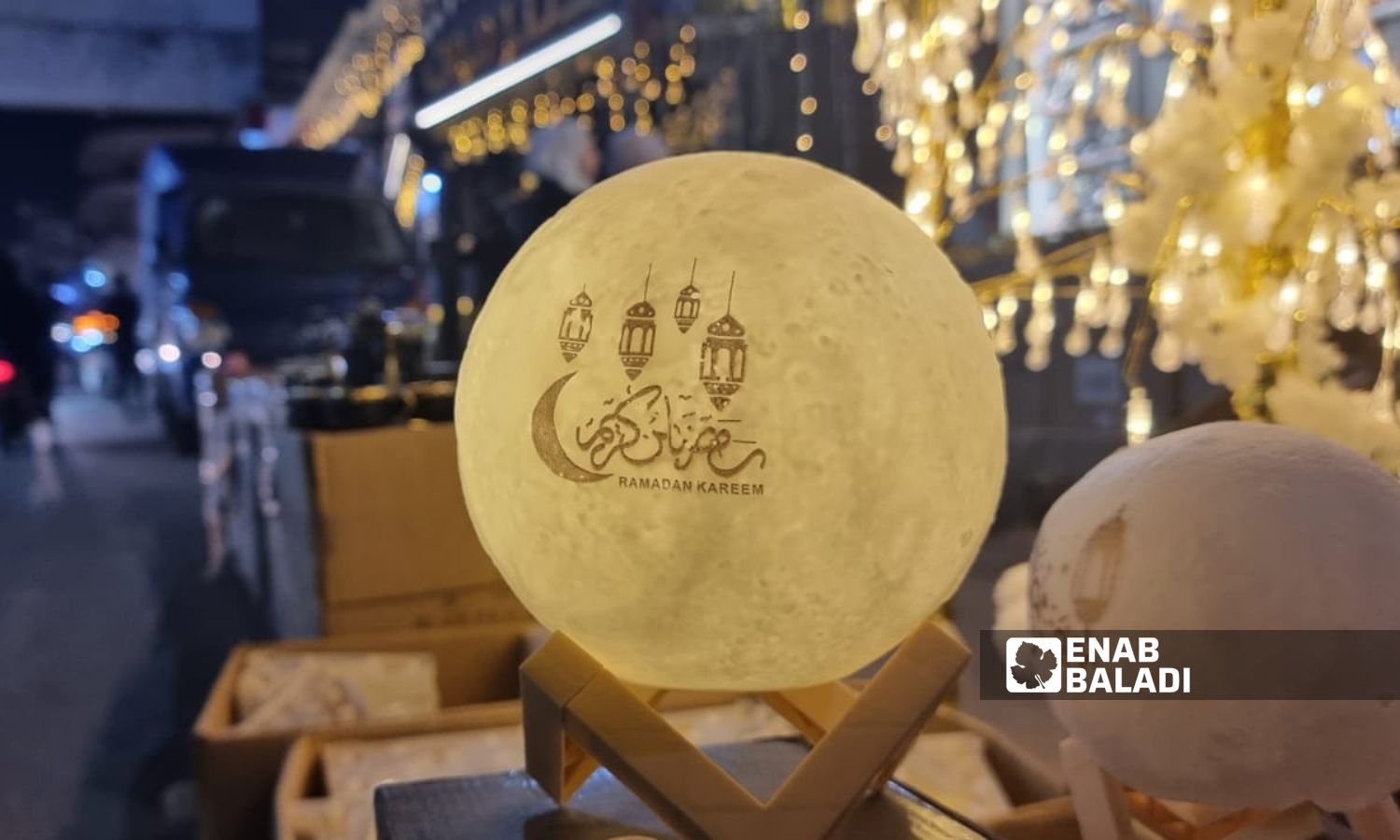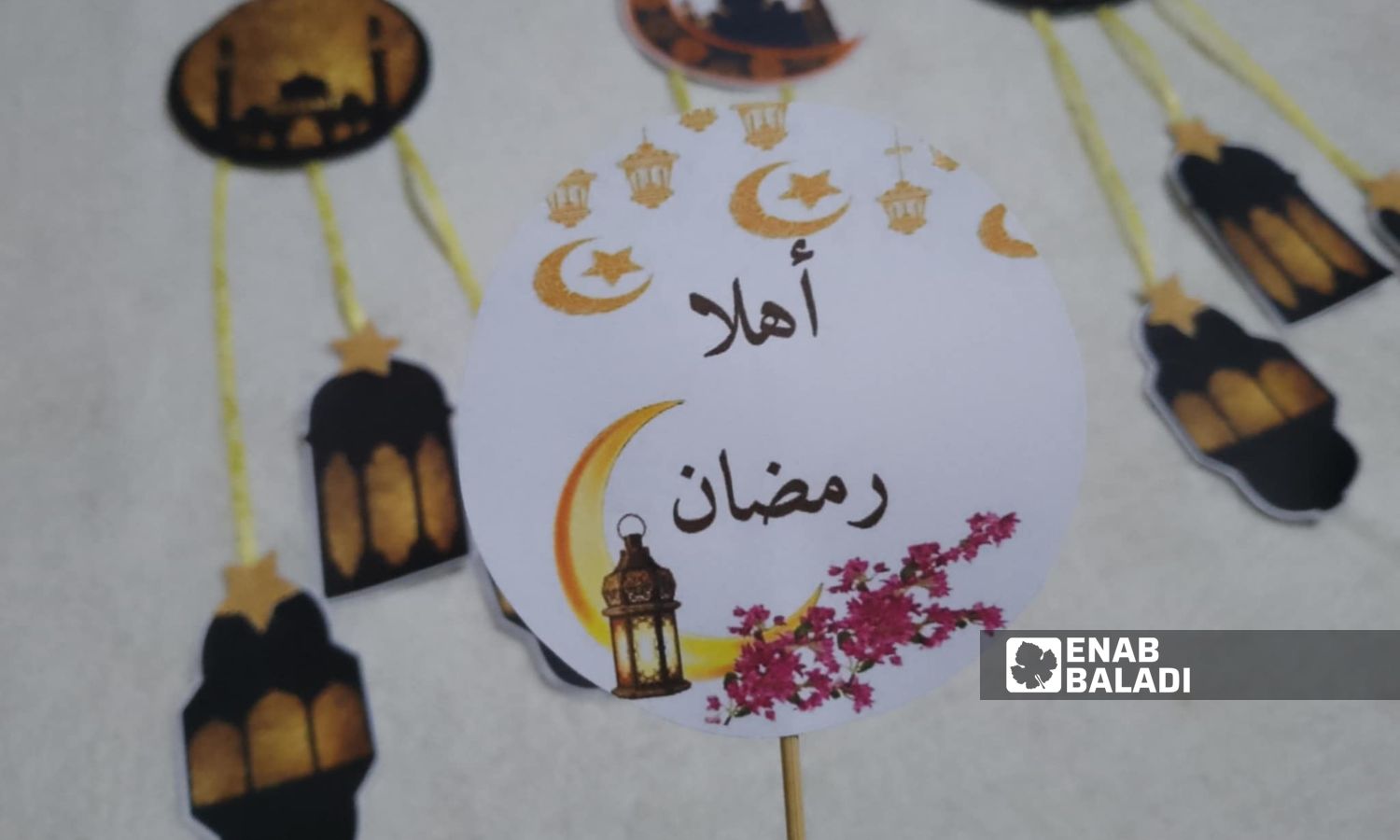



Days before the arrival of Ramadan, Rima (21 years old) began making decorations for the month of fasting to sell and generate income, a tradition she has adhered to with every season or occasion.
Before starting, Rima assessed what tools, papers, adhesives, and other crafting supplies she needed to begin creating items requested for various occasions, whether for public or private holidays, or even for religious events.
With the approach of Ramadan, the demand for special decorations increases in preparation for its arrival. Rima and other women have invested their passion and love for handicrafts into creating various items that reflect the Ramadan season, opening a source of livelihood that meets their and their families’ needs during this month.
Rima is a university student living with her family in Idlib. According to her statement to Enab Baladi, the experience of displacement from her village of al-Tamanah pushed her to become self-reliant and look for work from home to cover her study expenses and university fees, easing the burden on her family, which is overwhelmed by the difficult living conditions.
The young woman chose to make handcrafted products, such as decorations for a newborn baby, decorations for welcoming pilgrims, or for academic success or graduation. Before every season, she creates some models and displays them on her social media pages for promotion.
Some private schools in Idlib request models representing Ramadan, known as “Ramadan distributions,” like crescent moons, stars, illuminated lanterns, and Ramadan calendars, which they distribute to students.
Ghada (36 years old) works from her home in the town of Kafr Takharim, taking orders from schools to conduct activities related to each season.
Ghada told Enab Baladi that she manufactures most of the Ramadan decorations from wood, decorating some with phrases cut from foam paper.
The price of a small lantern is two US dollars with lighting, a larger one is three dollars, and the biggest is $3.5.
She uses resin, depending on customer requests, to make trays shaped like crescent moons and stars, with prices ranging from $7 to $10 depending on size and added decorations.
Resin is a transparent glass-like material created by mixing liquid epoxy with a hardener in specific proportions, along with alcohol or transparent colors, glitter, mica, and pigments. It is poured into silicone molds to create plates, trays, clocks, and stands for various occasions, including engagements, weddings, or the arrival of a new baby.

Women work on creating models and decorations before Ramadan to earn income – February 2025 (Enab Baladi)
As for wooden date platters, the wooden ones cost four dollars, while the metal ones are five dollars, and prices may increase or decrease based on size.
Tulip (19 years old) turned her room into a space to practice her hobby of creating decorative pieces from the materials available to her.
She told Enab Baladi that the orders increase several weeks before Ramadan begins, adding that the demand last season was higher, attributing the reason to the return of some displaced persons to their cities and villages.
Working from home in handicrafts is considered the best solution for many women and even girls due to the low costs and minimal capital requirements. However, they face challenges in marketing their products, as they lack a physical location to display their items, relying solely on their personal social media pages and working on demand.
Tulip struggles to deliver orders to the city of Idlib because she lives in the countryside, prompting her to seek a well-known store in the city to deposit the order for the customer to collect, without receiving any fee for that service.
On the other hand, Ghada feels that she often has to accept a smaller profit to sell larger quantities. Despite this, there are women who prefer not to make orders and settle for commercially available decorations in markets to save time.
While some are busy buying Ramadan decorations and accessories, which have become an annual ritual, many families struggle to provide for their children’s basic needs during Ramadan.
With the fall of the Syrian regime, several humanitarian organizations have focused on other areas, leaving behind hundreds of camps still in need of assistance.
Daily wages for workers in northern Syria are low compared to the living situation, with daily earnings not exceeding four dollars at best.
More than 90% of Syrian families live below the poverty line, while at least 13 million people (more than half the population) suffer from a lack of access to adequate food or the ability to afford it, according to a report by Human Rights Watch (HRW).
Additionally, 16.5 million people need humanitarian assistance to meet their basic needs.
if you think the article contain wrong information or you have additional details Send Correction